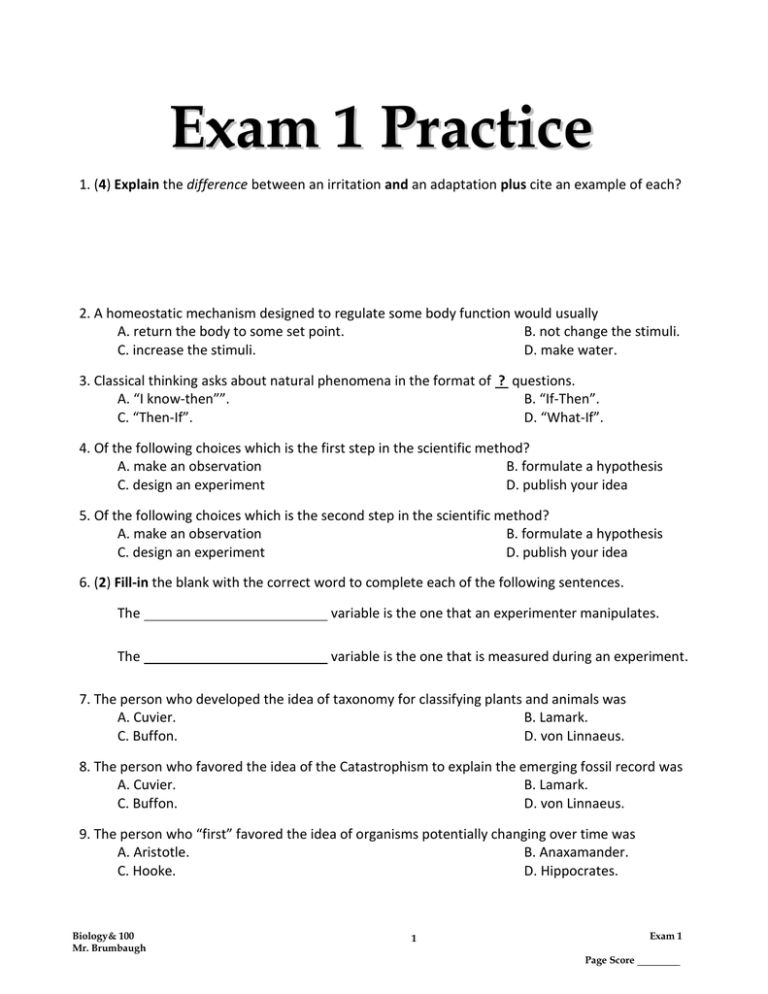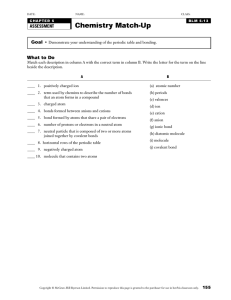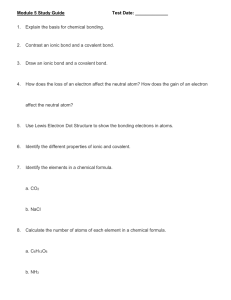E x a m
advertisement

Exam 1 Practice 1. (4) Explain the difference between an irritation and an adaptation plus cite an example of each? 2. A homeostatic mechanism designed to regulate some body function would usually A. return the body to some set point. B. not change the stimuli. C. increase the stimuli. D. make water. 3. Classical thinking asks about natural phenomena in the format of ? questions. A. “I know-then””. B. “If-Then”. C. “Then-If”. D. “What-If”. 4. Of the following choices which is the first step in the scientific method? A. make an observation B. formulate a hypothesis C. design an experiment D. publish your idea 5. Of the following choices which is the second step in the scientific method? A. make an observation B. formulate a hypothesis C. design an experiment D. publish your idea 6. (2) Fill-in the blank with the correct word to complete each of the following sentences. The variable is the one that an experimenter manipulates. The variable is the one that is measured during an experiment. 7. The person who developed the idea of taxonomy for classifying plants and animals was A. Cuvier. B. Lamark. C. Buffon. D. von Linnaeus. 8. The person who favored the idea of the Catastrophism to explain the emerging fossil record was A. Cuvier. B. Lamark. C. Buffon. D. von Linnaeus. 9. The person who “first” favored the idea of organisms potentially changing over time was A. Aristotle. B. Anaxamander. C. Hooke. D. Hippocrates. Biology& 100 Mr. Brumbaugh Exam 1 1 Page Score . 10. (4) Define the phrase “natural selection” and identify the person who proposed this idea? 11. Which of the following organism groups would be considered strictly consumers on the earth? A. monerans B. animals C. fungi D. algae 12. Which of the following kingdoms would be considered decomposers (the ones that break waste down to the atomic level) the earth? A. plants B. monerans C. fungi D. protistans 13. (4) Define the following terms: Matter Element 14. (3) Explain how a squirrel here at GRC can exhibit both potential energy and kinetic energy at the exact same time? 15. How many protons would be in an atom with an atomic number of 19 and a mass number of 40? A. 9 B. 40 C. 19 D. hard to tell from my chair 16. Given the same information as in question #15, the number of neutrons would be A. 9. B. 19. C. 21. D. just way too many. 17. If the atom described in question #15 were neutral, how would its electrons be arranged? A. 2, 8, 9 B. 2, 7 C. 2, 8, 8, 1 D. 2, 8, 8, 18, 4 18. The number of valance electrons in the atom in question #15 would be A. 9. B. 7. C. 1. D. 4. Biology& 100 Mr. Brumbaugh Exam 1 2 Page Score . 19. Which of the following particles would be different in an isotope of a neutral atom? A. protons B. electrons C. klingons D. neutrons 20. Which atomic particle has been lost to form an positive ion called a cation? A. protons B. electrons C. romulans D. neutrons 21. The weakest of the electron sharing bonds is the A. non-polar covalent bond. C. polar covalent bond. B. James Bond. D. ionic bond. 22. The strongest type of bond used by biological systems to build “permanent” molecules is the A. non-polar covalent bond. B. James Bond. C. polar covalent bond. D. ionic bond. 23. A hydrogen bond is best used to hold ? together. A. atoms C. charges B. molecules D. your pants 24. The reason salts (electrolytes) are so important in biological systems is they A. take up space. B. carry a charge. C. are used to build structure. D. taste great. 25. (3) Cite three characteristics or properties of water that makes it important for biological systems? 26. (4) Fill-in the correct word to complete the following sentences. An increases the hydrogen ion concentration of a solution. A helps to balance or maintain the pH of a solution around a set point. 27. Which of the following would show the strongest acidity? A. pH of 5.0 C. pH of 2.0 B. pH of 10.0 D. pH 0f 7.0 28. (2) Explain the biological use of a buffer in an organism? Biology& 100 Mr. Brumbaugh Exam 1 3 Page Score . 29. (3) Cite two reasons why carbon is the base atom for organic chemistry and life? 30. (4) Fill-in the correct word to complete the following sentences. The atoms found in a carbohydrate are and , , . Carbohydrates are used in biological systems as the primary source. 31. Animals store glucose as ? for energy demands. A. starch C. lipid B. glycogen D. cellulose 32. The carbohydrate that contains nitrogen and is found in the exoskeletons of insect is A. cellulose. B. glycogen. C. chitin. D. wax. 33. The characteristic that separates lipids structurally from carbohydrates is the ? the molecule. A. nitrogen in B. amount of oxygen in C. ringed nature D. molecular size of 34. Saturated versus unsaturated neutral fats differ in amount of ? in the molecule. A. nitrogen B. carbon C. hydrogen D. bacon 35. (3) Name the molecule that forms the backbone of a tri-glyceride and explain how neutral fats are used by human biological systems? 36. (4) Cite a function for a phospholipid and a function for a steroid in biological systems? Biology& 100 Mr. Brumbaugh Exam 1 4 Page Score . 37. In a phospholipid molecule the ? of the molecule is said to be hydrophilic. A. back B. tail C. head D. middle 38. (2) Distinguish between an essential and a non-essential amino acid? 39. All of the following atoms can be found in a protein chain except A. nitrogen. C. potassium. B. hydrogen. D. sulfur. 40. A proteins folding characteristics are dictated by the ? groups of the chain. A. amino B. acid C. rock D. side, variable, or R 41. (4) Explain the structural differences between the nucleic acids DNA and RNA? $$$$$$$$$$$$$$$$$$$$$$$$$$$$$$$$$$$$$$$$$$$$$$$$$$$$$$$$$$$$$$$$$$$$$$$$$$$$$$$$$ Extra Credit (4): Cite the products that occur when a radioisotope decays and explain what is meant by the term “half-life”? Biology& 100 Mr. Brumbaugh Exam 1 5 Page Score .






